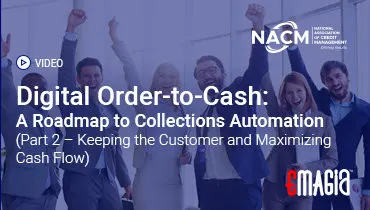In the digital age, a company’s financial health is more than just its balance sheet—it’s a story of constant vigilance. The seemingly routine cash application process, where payments are matched to invoices, stands as a critical and often underestimated front line in the battle against financial fraud. As businesses increasingly adopt automated cash application solutions to boost efficiency, they must also navigate a complex landscape of evolving threats. This comprehensive guide delves into every facet of fraud management in cash application, from understanding the subtle red flags to leveraging cutting-edge technology to build an impenetrable defense.
The Foundational Role of Cash Application in a Modern Enterprise
Before we can truly understand the threats, we must first appreciate the intricacies of the core function. The cash application process is the backbone of an organization’s accounts receivable. It’s the procedure of posting incoming payments from customers to their corresponding open invoices in the accounting ledger. Traditionally, this has been a labor-intensive, manual process fraught with potential for human error. The move to cash application automation changes the game, offering speed and accuracy, but also introducing new vulnerabilities that must be addressed with robust fraud controls.
What is the Cash Application Process and Why it Matters
This section will explain the fundamental steps of the process: gathering remittance data, matching payments, handling exceptions like short payments or deductions, and finally, posting the cash to the ERP system. It will highlight how an accurate and swift cash apps process directly impacts a company’s cash flow visibility, forecasting, and overall financial decision-making.
The Shift to Automated Cash Application and Its Advantages
This part will detail the benefits of using automated cash application solutions. It will cover how an automatic cash app or automated cash allocation system utilizes technologies like OCR (Optical Character Recognition) and NLP (Natural Language Processing) to process various payment formats (checks, ACH, wire transfers) and remittance advice. It will emphasize the gains in efficiency, accuracy, and scalability that drive businesses toward automating cash management.
Decoding the Evolving Fraud Landscape in Cash Management
Fraud is not a static challenge; it is a dynamic and relentless adversary. In the world of cash management automation, fraudsters have developed sophisticated tactics to exploit new technological pathways. This section will break down the primary types of fraud that can occur within the cash applications and accounts receivable ecosystem.
Common Types of Financial Fraud and Their Impact
This subsection will provide a detailed look at various fraud types, including but not limited to:
- Phishing and Email Impersonation: Scammers impersonating a trusted vendor or executive to reroute a payment. This can be particularly dangerous when dealing with a customer’s automated cash application system.
- Check and Wire Transfer Fraud: Forging checks or manipulating wire transfer details. This is a classic fraud type that persists even with automatic cash out cash app and other modern systems.
- Internal Employee Fraud: The deliberate creation of a fake vendor or the overpayment of an invoice to an account controlled by an employee. This highlights the need for strict internal controls, even with automated cash management systems in place.
- Chargeback Fraud: Customers falsely disputing a legitimate charge, a risk heightened by the speed of the automated cash app and other instant payment systems.
Building a Fortress: Strategies for Cash Application Management and Fraud Prevention
Proactive defense is the best offense. An effective fraud management strategy requires a multi-layered approach that combines technology, process, and human vigilance. This section will provide actionable strategies for businesses of all sizes.
Manual Controls and Best Practices for the Cash Applications Process
This part will discuss the essential human element. Even with automation, strong manual controls are vital. This includes segregation of duties, regular reconciliation audits, and mandatory verification protocols for any change in vendor or customer payment information. It will underline the importance of human oversight in the cash application process.
Leveraging Automated Cash Application Technology for Detection
This will be a deep dive into how modern automated cash application tools can be used for fraud detection. It will explain how these systems can:
Analyze transaction history for anomalies. An automated cash application system can flag an unusually large or small payment from a customer who has a consistent payment history. For instance, a small, manual adjustment in the system could be a sign of internal fraud.
Implement real-time alerts. As a payment is processed, the system can instantly alert the accounts receivable team of any discrepancies between the payment and the remittance, or if the bank details do not match the master file. This is where automated cash application solutions truly shine in their ability to act as a first line of defense.
Use rule-based checks. These tools can be configured to automatically flag payments from new or unverified customers or from certain high-risk geographical locations.
The Power of AI and Machine Learning: The Future of Fraud Management
The most advanced defense against fraud today comes from artificial intelligence. An AI powered cash application process is not just about matching payments faster; it’s about predicting and preventing fraud before it happens.
How AI Transforms Fraud Detection in the Cash Application Process
This section will explain the mechanics of AI in this context. It will differentiate between rule-based systems and machine learning models that learn from vast datasets. It will cover how AI can:
- Behavioral Analysis: AI can establish a baseline for normal customer behavior (e.g., payment frequency, average amount, payment method) and instantly flag any deviation. This can help prevent a variety of scams, including those involving impersonation.
- Anomaly Detection: By processing thousands of data points in real time, AI can identify subtle, complex patterns that a human eye would never catch. This is particularly effective for detecting collusion or other forms of internal fraud that might slip through traditional controls.
- Predictive Analytics: Over time, the AI model refines its ability to predict which transactions have a high probability of being fraudulent, allowing the system to either block the payment or send it for immediate human review. This is the core of an effective automated cash application technology.
A Strategic Guide to Implementing a Robust Fraud Framework
This section will provide a step-by-step roadmap for organizations looking to strengthen their defenses, moving from reactive responses to proactive prevention.
Choosing the Right Automated Cash Application Tools
This part will offer guidance on what to look for when selecting an automated cash app or a full cash management automation suite. Key considerations will include integration with existing ERP systems, the sophistication of AI and machine learning capabilities, and the vendor’s commitment to security and compliance.
Training Your Team for Success
Human training is just as important as technology. This will emphasize the need to educate the cash applications team on new fraud schemes, how to use automated cash application technology effectively, and the importance of a vigilant, suspicious mindset.
Beyond the Transaction: The Broader Impact of Robust Fraud Management
Effective fraud management provides benefits that extend beyond simply preventing financial losses. A secure cash application management process builds customer trust, protects a company’s reputation, and ensures the accuracy of financial reporting.
The Role of Automated Cash Reconciliation in Financial Integrity
This part will explain how automated cash reconciliation complements fraud management. By ensuring every payment is accurately and instantly matched and posted, it eliminates discrepancies that could be used to mask fraudulent activity. This creates a clean, auditable trail that is essential for financial integrity and compliance.
Streamlining Your Defenses with Emagia’s Automated Cash Application Technology
In the complex world of accounts receivable, manual processes are a significant liability. Emagia’s automated cash application solutions are designed to revolutionize your approach to both efficiency and security. By leveraging an advanced AI powered cash application process, our platform achieves exceptional match rates, dramatically reducing the need for manual intervention and freeing your team to focus on strategic tasks. Our technology not only captures and processes remittance data from countless sources with touchless precision but also intelligently handles exceptions. The system learns from historical data and analyst actions, allowing for the automatic resolution of future discrepancies. This built-in intelligence provides a continuous layer of security and accuracy, ensuring that every incoming payment is not only posted correctly, but also scrutinized for anomalies, safeguarding your business from financial risks and ensuring a clean audit trail.
Frequently Asked Questions
What is a cash app?
A cash app typically refers to a peer-to-peer payment service, but in a business context, it relates to an automated cash application solution that processes and matches incoming payments to outstanding invoices.
What is the difference between automated cash and manual cash application?
Manual cash applications rely on human clerks to physically match paper checks, emails, and lockbox files to invoices. An automated cash application uses technology like AI and machine learning to perform this task instantly and with a much higher degree of accuracy.
How does AI help with fraud management in cash application?
AI-powered systems analyze payment patterns and behavioral data to detect anomalies and flag potentially fraudulent transactions in real-time. This goes beyond simple rule-based checks, allowing for the detection of sophisticated and evolving fraud schemes.
Can an automated cash management system handle all types of payments?
Yes, advanced automated cash management solutions are built to handle and process all major payment types, including ACH, wire transfers, credit cards, and even paper checks through OCR technology, ensuring every payment gets properly posted to the accounts receivable ledger.
What are the benefits of automating cash management?
The benefits include faster cash posting, improved accuracy, reduced operational costs, enhanced team productivity, better cash flow visibility, and significantly improved fraud detection and prevention capabilities through an automated cash reconciliation process.



